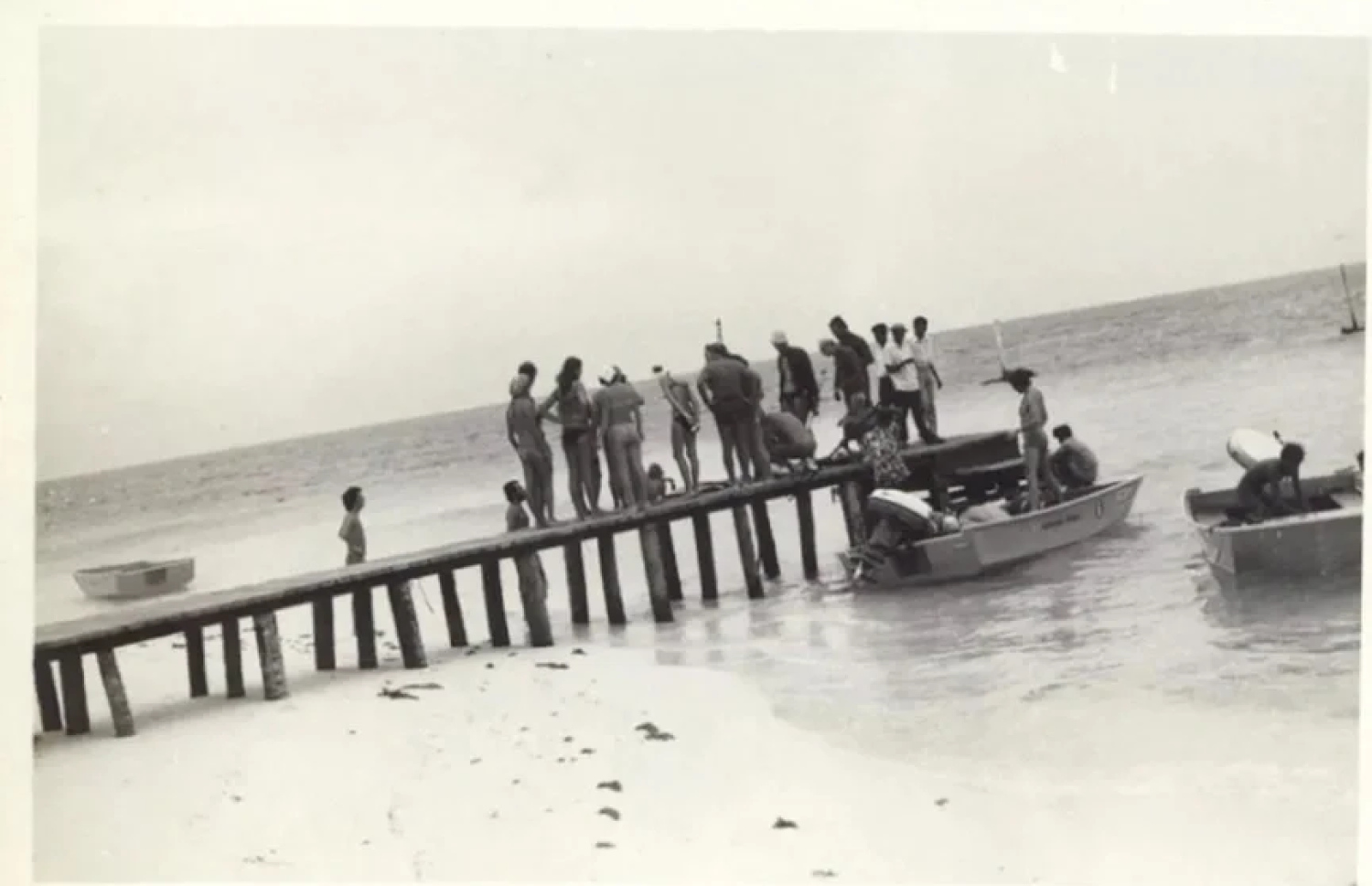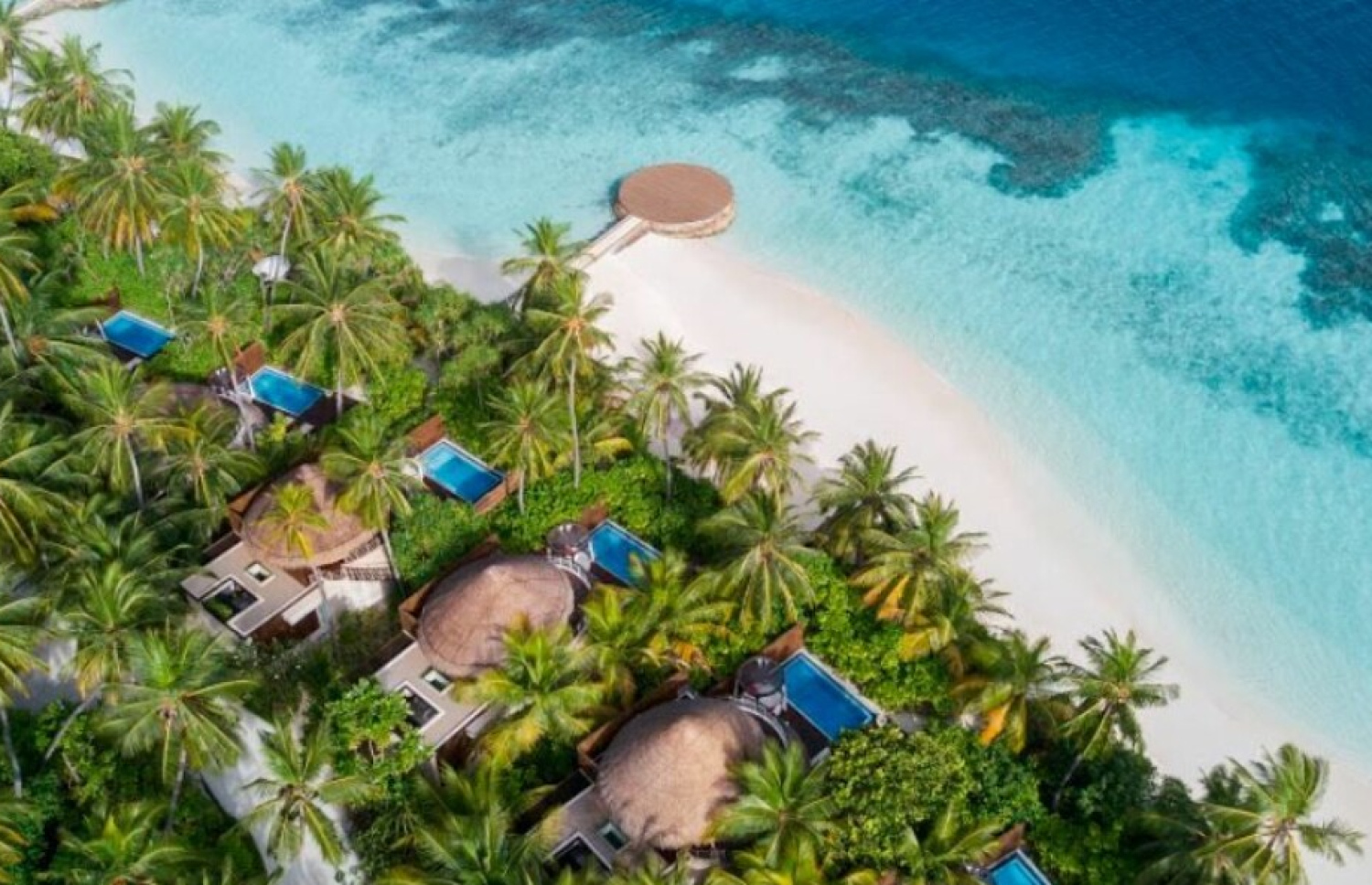For the longest time Maldives had relied on fishing as its main source of income, with trade practices such as coco de mer (tavakkaashi), dried tuna, coir rope, ambergris (maavaharu) and cowries being just some of the ways Maldivians of old financed their living.
As the years rolled by, a new contender for the top spot had been born with a simple thought: “Why don’t more people visit Maldives, a land where such beauty is commonplace, and the people so warm, so welcoming?” This was something along the lines of what Italian travel agent George Corbin must have thought when Ahmed “Kerafa” Naseem (Maldivian Embassy) brought him and his clients to various islands in Maldives in 1971.
And with that, everything changed.
Naseem, along with Mohamed Umar (MU) Manik and Hussain “Champa” Afeef and Corbin, scouted islands where they could get started on their grand vision. Taking into account that marine transport at the time wasn’t as quick as it is now, they chose Vihamanaafushi due to its close proximity to Male’ and the airport.
This sparked the beginning of Kurumba Maldives.
<b>Kurumba Maldives: The Progenitor of Maldivian Tourism</b>

Corbin came back to Maldives a year after his visit in 1971, with photographers and journalists in order to highlight the dormancy of Maldives and showcase it to the world, where they stayed at Kurumba.
Tourism has been the backbone of Maldives ever since it started in 1972 with Kurumba Maldives as the first Maldivian resort / hotel opening on 3rd October.
Due to the success Kurumba had (its 30 rooms were booked throughout the year), the coming years saw foreign investments on a grand scale for such a small country. The economy skyrocketed, catapulting the island nation into a period of prosperity.
Since 1972, Kurumba Maldives has turned into a five-star luxury resort, with 9 room / villa categories, 12 dining options, four wellness experiences and a plethora of activities for people to enjoy.
Bandos Maldives opened in the same year on 10th December, marking the second resort to open in Maldives. When it opened, they only had 28 rooms available for booking. The resort has gone through some significant upgrades since, with 220 rooms spanning 8 categories, 9 dining options, wellness experiences for children and adults, and a multitude of activities.
<b>Post Kurumba and Bandos: The Development of Tourism</b>

The years between 1972 to 1978 were the beginning stages for Maldivian tourism, with 17 resorts being built during this time frame, totaling 1,300 beds. The resorts were simple but effective, relying mostly on the beauty and peace islands held.
Due to marine transport limitations at the time, the resorts were built in close proximity to the airport, with mechanized fishing boats and speed boats being the sole modes of transport to and from the airport and resorts.
The years between 1979 to 1988 saw a springboard development of 41 resorts in that time. As international air travel swelled, charter carriers started to offer promotional packages to Maldives, which led to even further development in Maldivian tourism.
During this time, a significant milestone in tourism development was achieved with the introduction of the First Tourism Master Plan (FTMP) in 1983. The FTMP was one of five frameworks that have currently been developed, with the first one focusing on sustainable development, environmental protection and a call to integrate tourism into the social and economic development of Maldives. Resorts that were built at the tail end between 1979 and 1988 followed the FTMP to a tee.
The years between 1989 to 1997, saw a further 16 resorts opened up, bringing the total bed capacity up to 4,920. This was the period in Maldivian tourism development that saw innovation and high quality services make its way to the island nation. Hospitality practices were honed to perfection, with skilled labor rising to the occasion from both locals and expatriates.
Development of tourism saw the introduction of the Second Tourism Master Plan (STMP) between 1996 to 2005. The main aim of the plan was to bring tourism to the northern and southern regions and expand across the country so that Male’ atoll wouldn’t be the only option for tourists to explore.
Reducing expatriate labor and increasing female numbers in the workforce was also a key objective, but proved to be difficult due to a few reasons. One of the reasons was due to the gender disparity at the time: in 2006, there were only 1,512 women working in the hospitality industry, as opposed to the 10,578 men. It had proved difficult to hire women to the industry due to concerns that parents had, mainly of a security and daily transport (lack thereof from islands to resorts) nature. The fact that it was a male-dominated field was also a factor.
At this point, various other pieces started falling into place such as the introduction of spa resorts, a broader choice of accommodation and international resort brands positioning themselves in Maldives, with hotels, safari boats and yachts following suit.
Air travel was introduced as more resorts were built further away from the centralized hub of Male’ Atoll. This allowed for easy transport and for tourists to see the beauty of Maldives from up high and what the island nation looked like from a bird's eye view.
The next phase in the development of tourism in Maldives ran from 2002 to 2008, with the Third Tourism Master Plan (TTMP) being launched in 2007. The main purpose of the TTMP was to “take tourism to the people within the broader framework of sustainable development in the economic, environmental, and social spectra.”
What followed afterward were the Fourth Tourism Master Plan (4TMP) and the Fifth Tourism Master Plan (5TMP). The 4TMP ran from 2013 to 2017, with the tourism industry experiencing 8 percent growth on average from 2003 to 2013. By this time, tourism had become Maldives’ biggest economic force. The aim of the 4TMP was to “ensure sustainability and perseverance to a well planned and regulated economic sector for the period from 2013-2017.”
The plan was prepared with help from various development partners such as the Asian Development Bank (ADB), United Nations Development Programme (UNDP), the World Bank (WB) and the World Tourism Organization (UNWTO). (Excerpts taken from the Preface of the Fourth Tourism Master Plan 2013 - 2017 from then-Minister of Tourism Arts & Culture, Ahmed Adheeb Abdul Ghafoor.)
We have now reached the current stage of Maldivian tourism, with the Fifth Tourism Master Plan (5TMP) currently under way from 2023 - 2027. The 5TMP “sets out the vision, policy priorities, and strategies for the industry over the next 5 years and beyond.”
The plan was put together with help from the ADB. As per then-Minister of Tourism Abdulla Mausoom’s words via the Foreword of the Maldives Fifth Tourism Master Plan document: “5TMP examines priority areas for developing the tourism industry. These include the business environment, human resource development, environmental conservation, information and communication technology, the social and cultural environment, safety and security, and the legal environment. By incorporating recommendations from the UN Sustainable Development Goals and international best practices, 5TMP’s vision is to position Maldives as the world’s leading destination in sustainable tourism with a special focus on making Maldives an accessible tourism destination.”
<b>General and Recent Statistics of Tourism in Maldives</b>
As of May 2025, Maldives has 183 resorts, 16 hotels, 832 guesthouses and 158 love-aboard vessels, bringing the total tourist bed count to 64,886.
It has been two years since the beginning of the implementation of the 5TMP. 2023 saw over 1.8 million tourist arrivals, a record number after Covid, with 2024 reaching a staggering 2 million plus tourist arrivals. 2025 is estimated to have 2.2 million tourist arrivals by the end of the year.
Even though the United Nations had deemed Maldives unfit for tourism, due to a lack of facilities and infrastructure (airports, transport, basic hotels, etc), the island nation was able to defy expectations and emerge as a fierce competitor in the international tourism industry.
Covid saw the country fall into a slump but recent years have shown the island nation rubberband back to former glory.